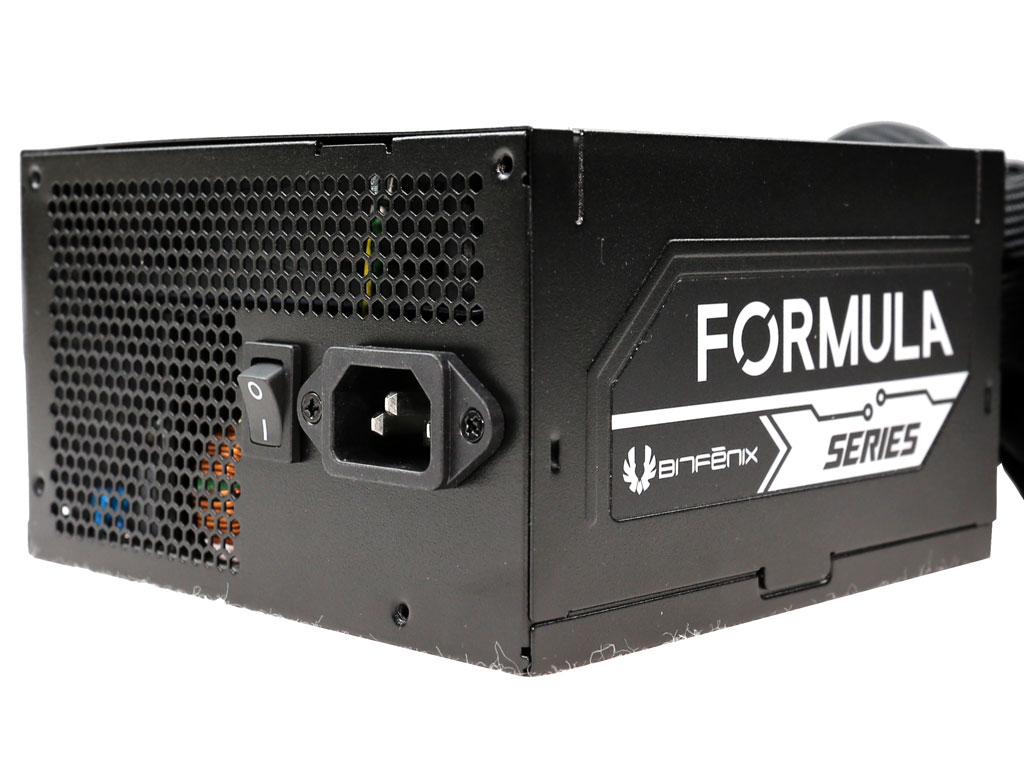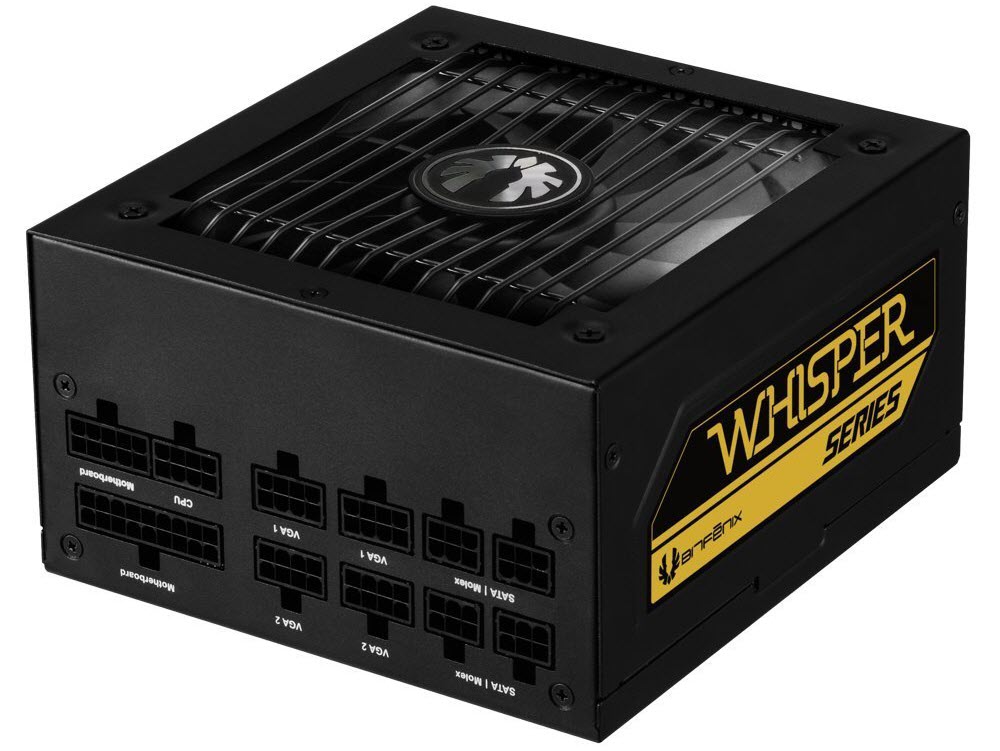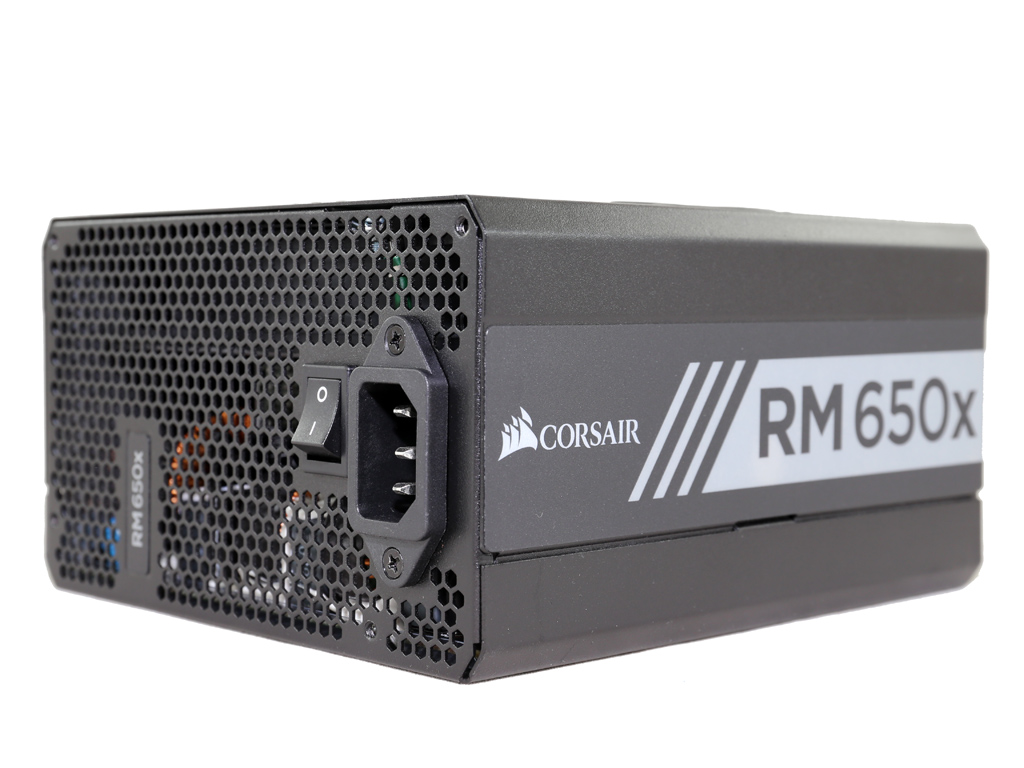Bitfenix Formula Gold 650W PSU Review
Why you can trust Tom's Hardware
Load Regulation, Hold-Up Time & Inrush Current
To learn more about our PSU tests and methodology, please check out How We Test Power Supply Units.
Primary Rails And 5VSB Load Regulation
Load Regulation testing is detailed here.
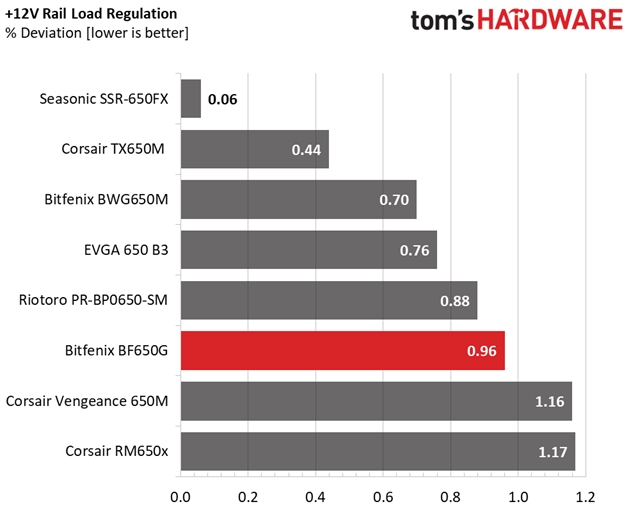
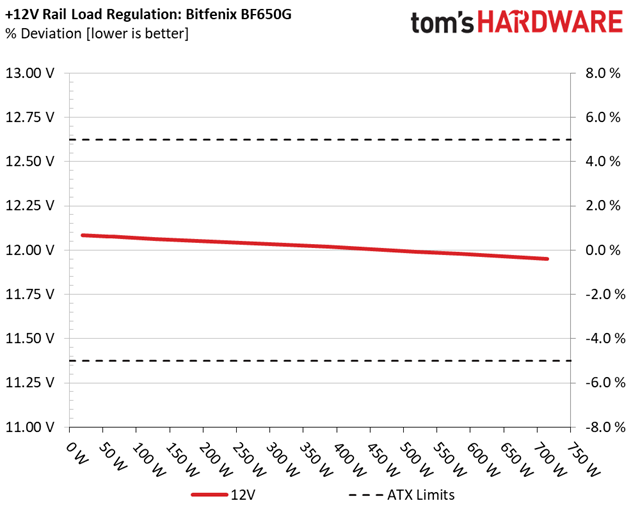
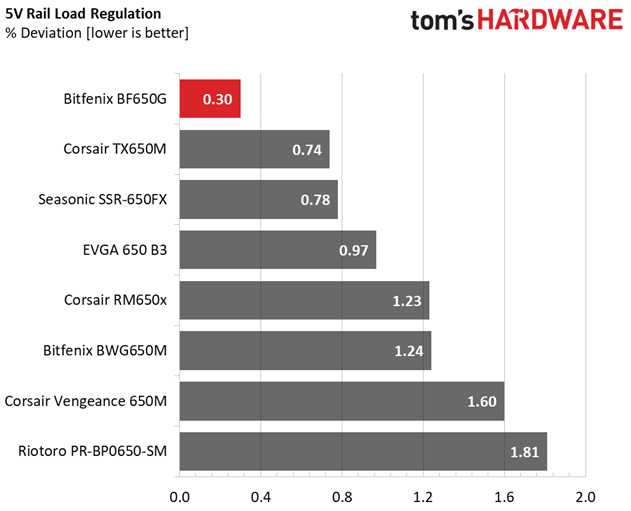
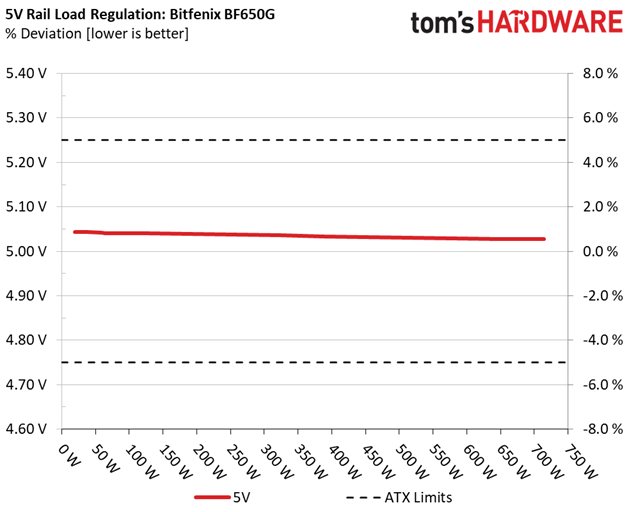
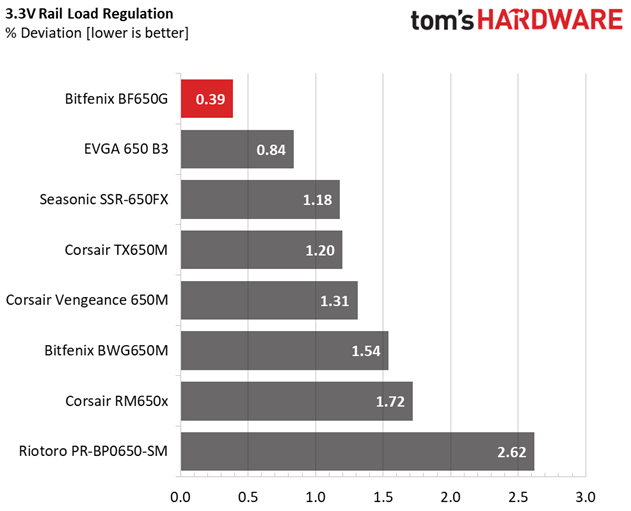
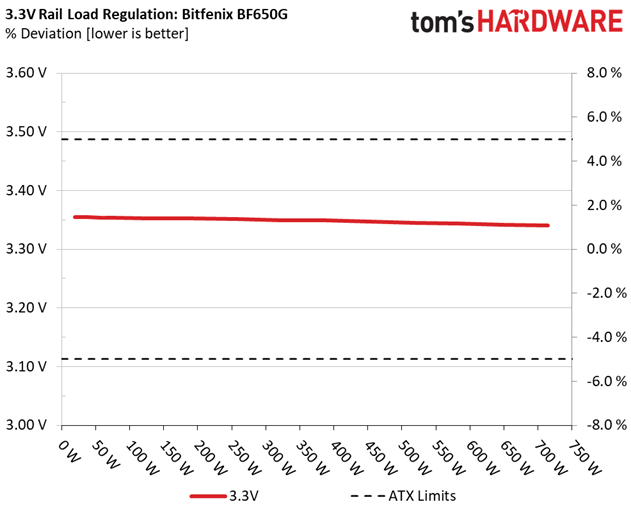
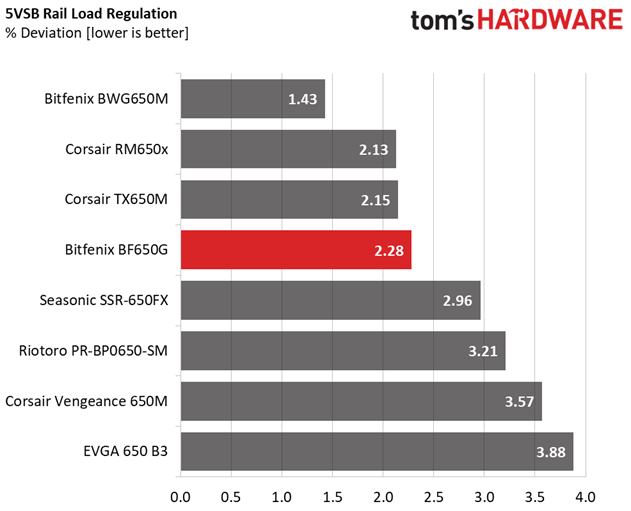
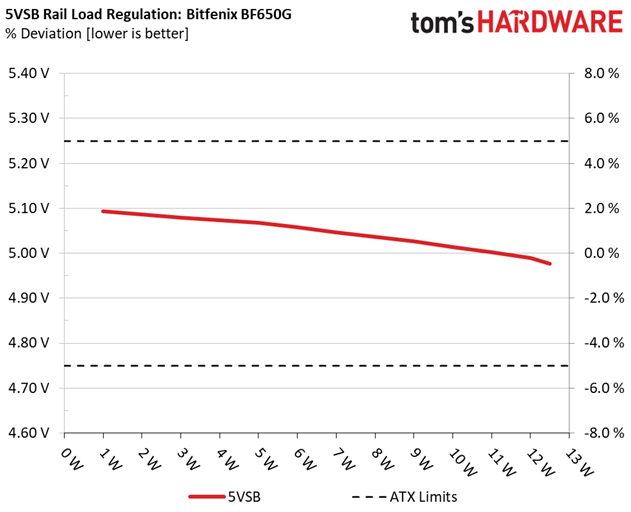
Hold-Up Time
Our hold-up time tests are described in detail here.
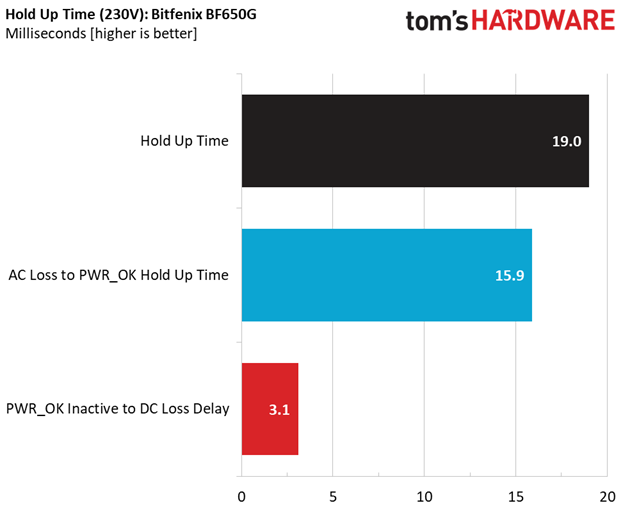
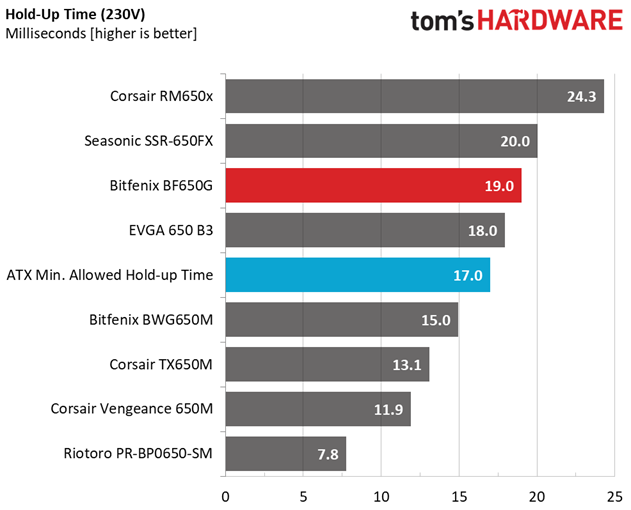
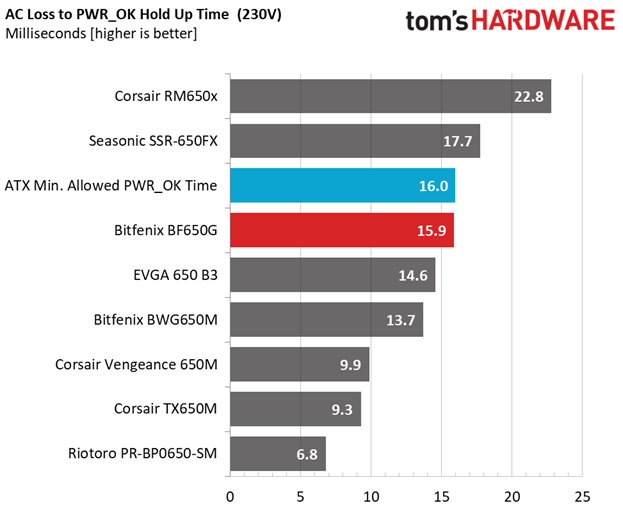
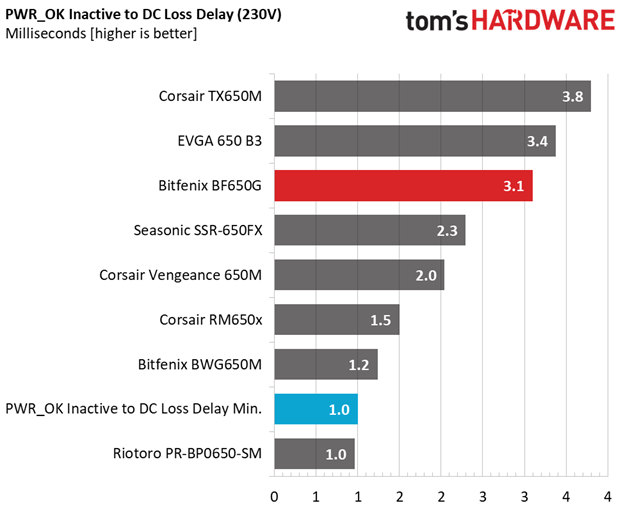
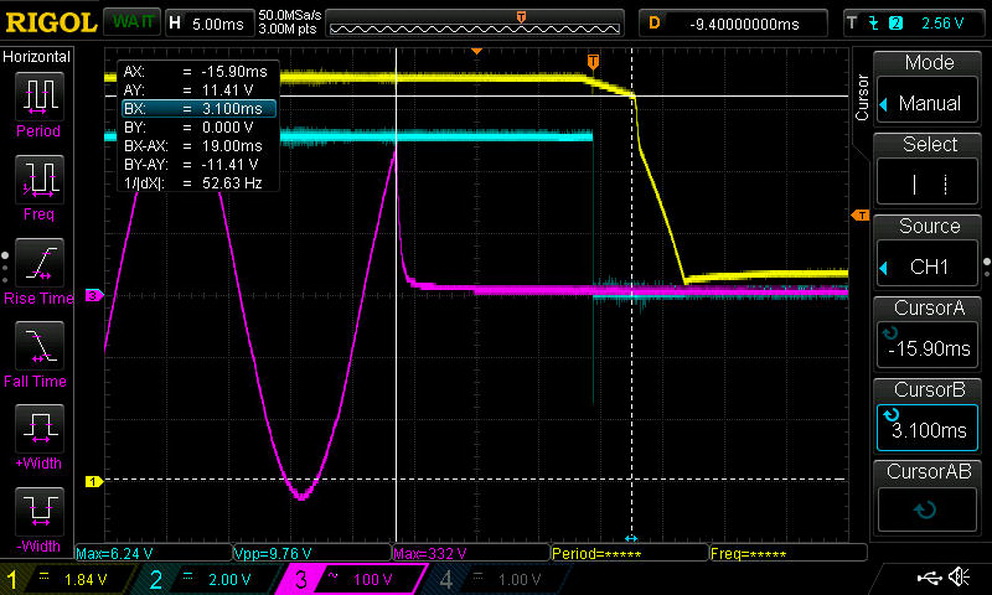

The hold-up time we measure is longer than 17ms, while the power-good signal is accurate and only a hair away from 16ms.
Inrush Current
For details on our inrush current testing, please click here.

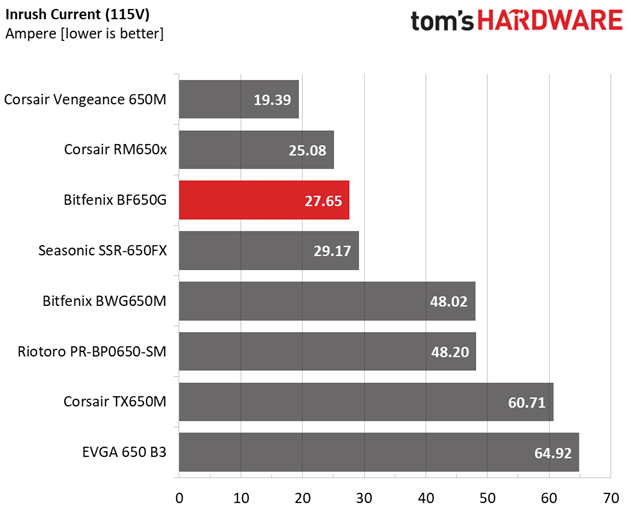
The inrush current with 115V is low. However, this is not the case with 230V input.
Load Regulation And Efficiency Measurements
The first set of tests reveals the stability of the voltage rails and the BF650G's efficiency. The applied load equals (approximately) 10 to 110 percent of the PSU's maximum load in increments of 10 percentage points.
Get Tom's Hardware's best news and in-depth reviews, straight to your inbox.
We conducted two additional tests. During the first, we stressed the two minor rails (5V and 3.3V) with a high load, while the load at +12V was only 0.1A. This test reveals whether a PSU is compatible with Intel's C6/C7 sleep states or not. In the second test, we determined the maximum load the +12V rail could handle with minimal load on the minor rails.
| Test # | 12V | 5V | 3.3V | 5VSB | DC/AC (Watts) | Efficiency | Fan Speed | PSU Noise | Temps (In/Out) | PF/AC Volts |
|---|---|---|---|---|---|---|---|---|---|---|
| 1 | 3.580A | 1.983A | 1.967A | 0.987A | 64.828 | 85.807% | 480 RPM | 9.6 dB(A) | 37.87°C | 0.958 |
| 12.076V | 5.041V | 3.354V | 5.068V | 75.551 | 45.85°C | 115.30V | ||||
| 2 | 8.159A | 2.976A | 2.953A | 1.187A | 129.335 | 89.922% | 480 RPM | 9.6 dB(A) | 38.42°C | 0.980 |
| 12.064V | 5.040V | 3.353V | 5.058V | 143.831 | 47.17°C | 115.21V | ||||
| 3 | 13.146A | 3.474A | 3.429A | 1.387A | 194.435 | 91.082% | 480 RPM | 9.6 dB(A) | 38.74°C | 0.986 |
| 12.052V | 5.039V | 3.352V | 5.047V | 213.473 | 47.88°C | 115.12V | ||||
| 4 | 18.144A | 3.971A | 3.940A | 1.589A | 259.662 | 91.237% | 480 RPM | 9.6 dB(A) | 39.55°C | 0.988 |
| 12.040V | 5.037V | 3.351V | 5.037V | 284.602 | 48.84°C | 115.13V | ||||
| 5 | 22.815A | 4.966A | 4.926A | 1.791A | 324.949 | 91.031% | 480 RPM | 9.6 dB(A) | 40.17°C | 0.990 |
| 12.029V | 5.036V | 3.349V | 5.026V | 356.964 | 49.71°C | 115.03V | ||||
| 6 | 27.433A | 5.958A | 5.913A | 1.995A | 389.488 | 89.844% | 695 RPM | 15.4 dB(A) | 41.57°C | 0.989 |
| 12.018V | 5.034V | 3.349V | 5.014V | 433.516 | 51.25°C | 114.93V | ||||
| 7 | 32.129A | 6.957A | 6.904A | 2.200A | 454.796 | 89.252% | 907 RPM | 23.3 dB(A) | 42.19°C | 0.989 |
| 12.004V | 5.032V | 3.347V | 5.002V | 509.563 | 52.10°C | 114.93V | ||||
| 8 | 36.836A | 7.953A | 7.893A | 2.405A | 520.115 | 88.585% | 1153 RPM | 30.8 dB(A) | 43.09°C | 0.990 |
| 11.991V | 5.031V | 3.345V | 4.990V | 587.138 | 53.29°C | 114.84V | ||||
| 9 | 41.953A | 8.453A | 8.375A | 2.408A | 585.033 | 87.932% | 1515 RPM | 37.0 dB(A) | 44.00°C | 0.991 |
| 11.978V | 5.029V | 3.344V | 4.985V | 665.326 | 54.62°C | 114.73V | ||||
| 10 | 47.016A | 8.953A | 8.886A | 2.512A | 649.761 | 87.164% | 1844 RPM | 41.9 dB(A) | 45.16°C | 0.992 |
| 11.965V | 5.028V | 3.342V | 4.977V | 745.448 | 55.93°C | 114.74V | ||||
| 11 | 52.490A | 8.956A | 8.891A | 2.515A | 714.591 | 86.272% | 2043 RPM | 44.7 dB(A) | 46.11°C | 0.993 |
| 11.952V | 5.027V | 3.341V | 4.972V | 828.299 | 57.48°C | 114.61V | ||||
| CL1 | 0.738A | 12.002A | 12.000A | 0.000A | 109.515 | 85.599% | 505 RPM | 8.9 dB(A) | 43.37°C | 0.977 |
| 12.071V | 5.030V | 3.353V | 5.076V | 127.939 | 50.91°C | 115.22V | ||||
| CL2 | 54.179A | 1.000A | 1.001A | 1.000A | 661.547 | 87.667% | 1902 RPM | 43.5 dB(A) | 45.29°C | 0.992 |
| 11.963V | 5.033V | 3.344V | 5.024V | 754.612 | 55.45°C | 114.72V |
Load regulation on the +12V rail falls within 1%. But we expected an even better result, given the native cables. Our results are better on the minor rails, with both 5V and 3.3V staying within 0.4%.
Efficiency-wise, the BF650G does satisfy the 80 PLUS Gold standard's requirements, despite the tough operating conditions we apply.
Noise is minimal up to about 50% load, it remains below 30 dB(A) with up to 70% load, and only goes over 40 dB(A) during our full-load test. In general, this is a quiet PSU, even though it doesn't have a semi-passive fan mode.
The power factor readings are a little on the low side, though they don't give us cause for worry.
MORE: Best Power Supplies
MORE: How We Test Power Supplies
MORE: All Power Supply Content
Current page: Load Regulation, Hold-Up Time & Inrush Current
Prev Page Teardown & Component Analysis Next Page Efficiency, Temperature & Noise
Aris Mpitziopoulos is a contributing editor at Tom's Hardware, covering PSUs.
